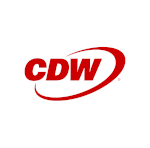What Is the Difference Between Cloud-First and Cloud-Smart?
Cloud-first and cloud-smart represent different cloud adoption strategies: Cloud-first refers to the prioritization of cloud migration without regard to specific workflows, while cloud-smart considers the different needs of individual apps or workflows.
“In a cloud-first approach, the goal is to get all workloads running in the public cloud at any cost,” says Keri. “In contrast, a cloud-smart approach looks at the public cloud as a component of overall enterprise IT infrastructure, or platform, and makes conscious choices about what workloads are best suited for the public clouds and which workloads are best run somewhere else; for example, colocated, on-premises or the edge.”
He adds that not all workloads, especially many legacy workloads, need to run in the public cloud. For example, new workloads that have reached a steady state after initial experimentation and iteration and are not particularly elastic are usually not well suited for the public cloud.
“Using a cloud-smart approach, enterprises can make the best decision for each workload without having their blinders on,” Keri explains.
EXPLORE: Develop a seamless work anywhere strategy with expert guidance.
App Modernization’s Role in Effective Hybrid Work Environments
To ensure efficient and effective remote and hybrid workflows, businesses should undergo app modernization as part of their approach to the cloud. Rehosting, replatforming and refactoring applications as necessary enables organizations to improve scalability, flexibility and security within their IT environment. However, businesses should understand the pros and cons of app modernization to determine if the ROI makes sense for their organization.
According to Keri, up to two-thirds of containerized, cloud-native applications begin their life in the public cloud. These cloud-native applications can either be new composite applications that build on existing functionality or are implementations of existing virtualized applications as cloud-native applications.
“The ROI on new composite applications is typically clearer than the ROI on refactoring — or modernizing — existing applications. The reason is that refactoring is hard, much like remodeling a house, and often takes longer than anticipated,” says Keri. “However, building composite applications does require a strategy to determine where the underlying functionality needs to reside. Often, these composite applications can be built only after migrating existing legacy applications to the public cloud, where new composite applications can be built.”












